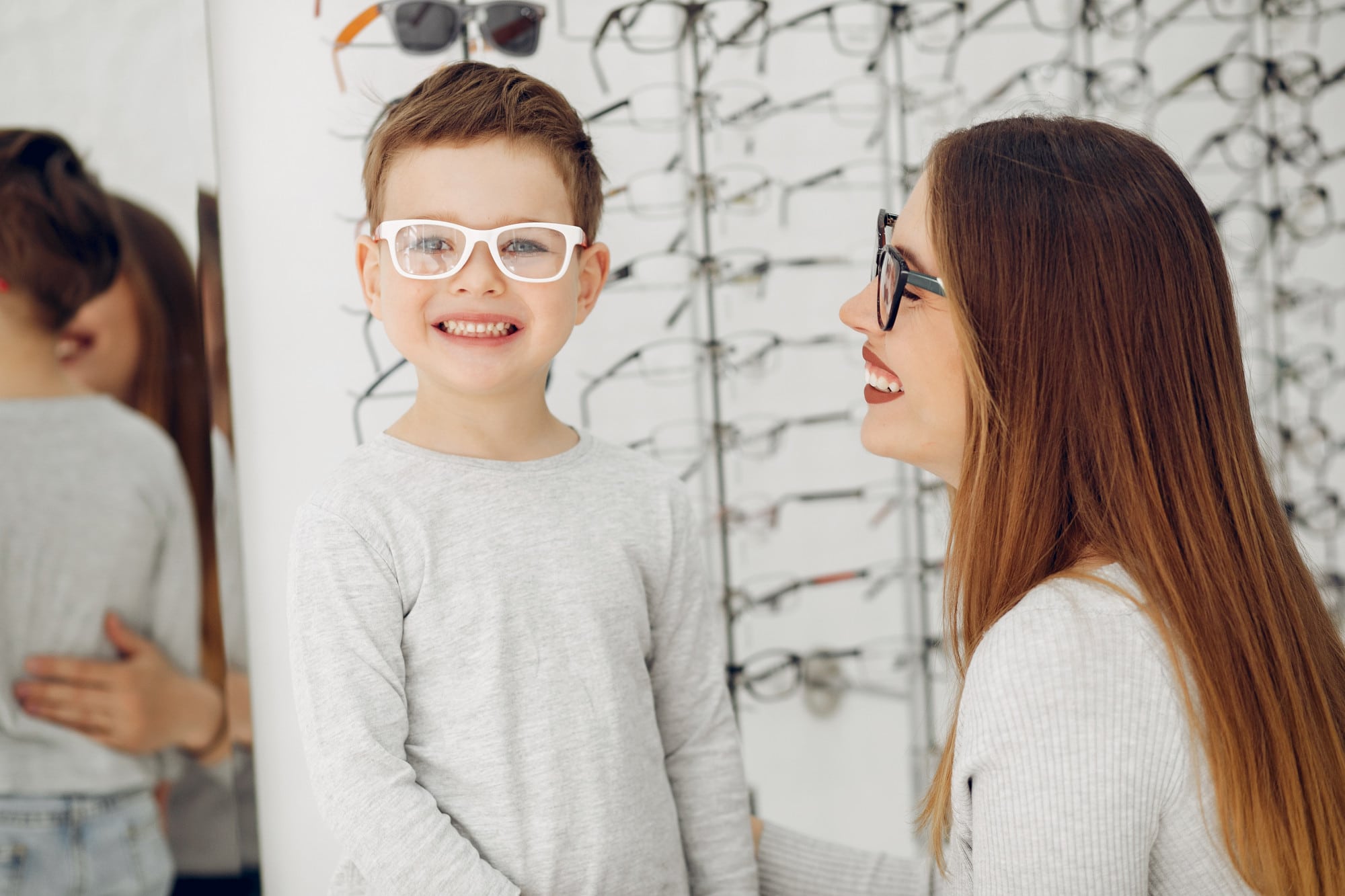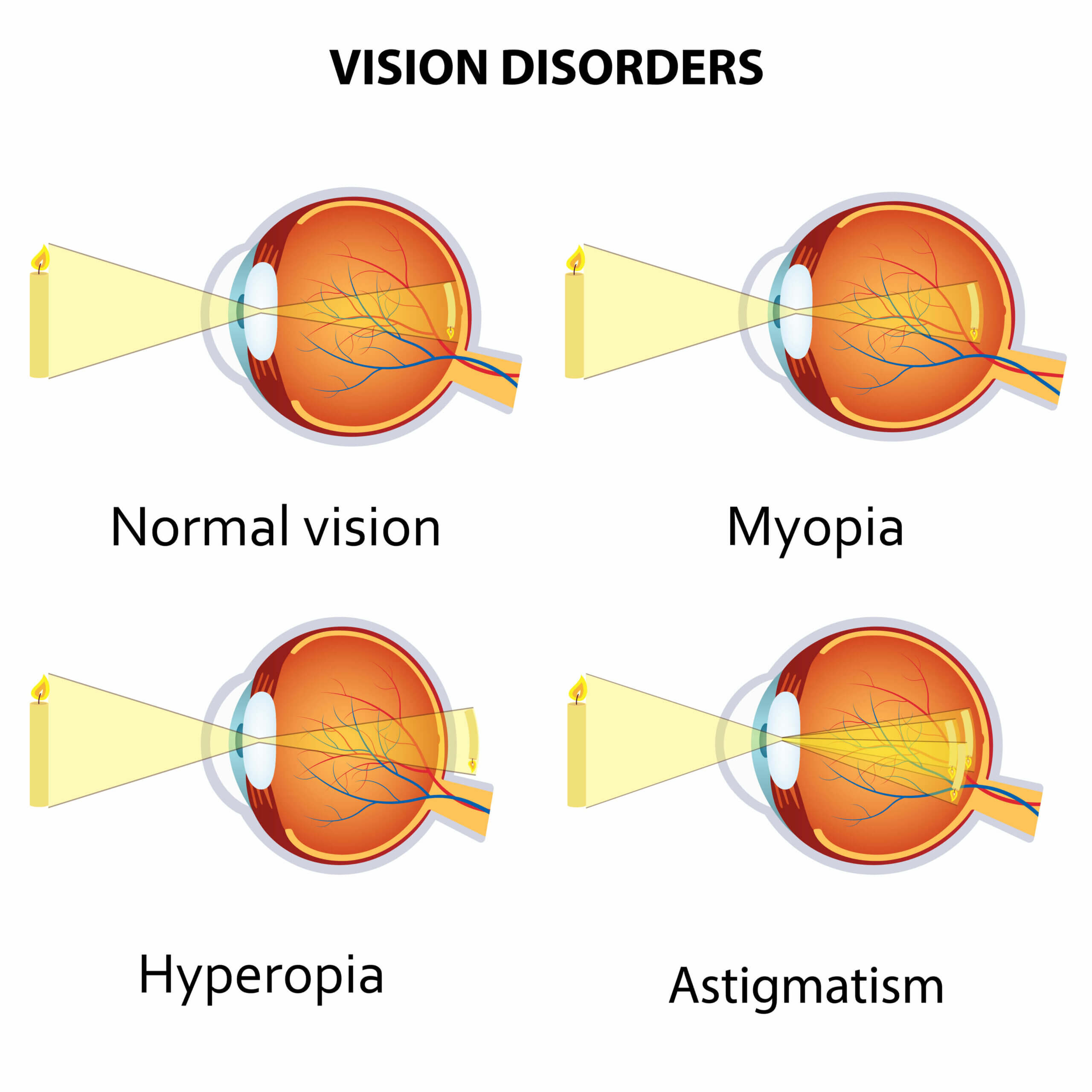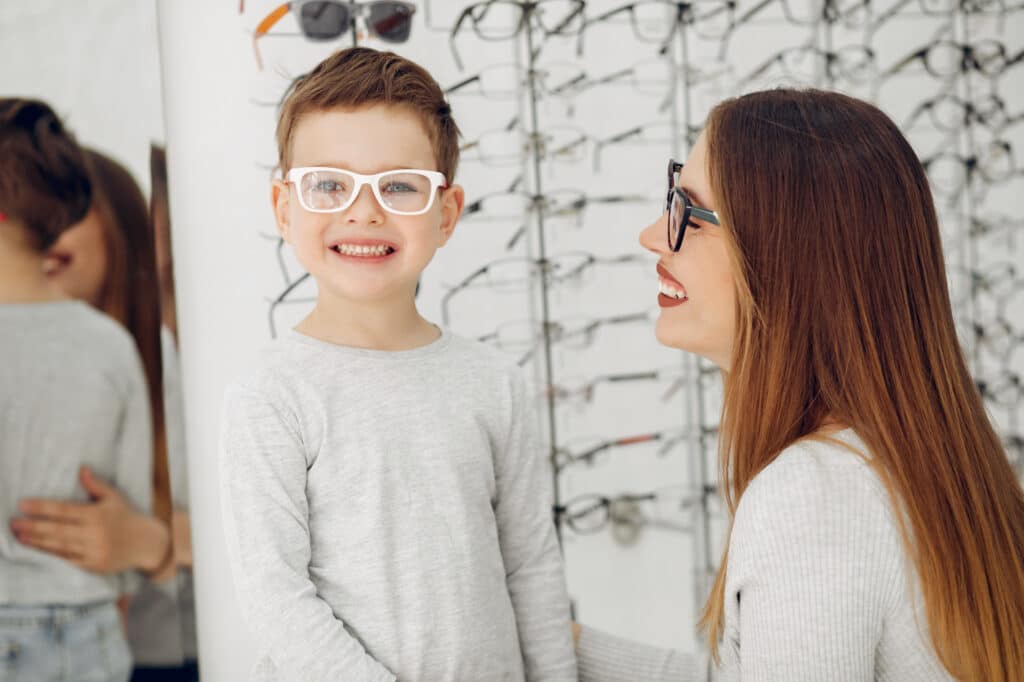
Myopia, also known as nearsightedness, is a common vision condition that affects millions of children worldwide. It causes distant objects to appear blurry while nearby objects remain clear. In recent years, the prevalence of myopia among children has been increasing at an alarming rate. It is essential for parents and caregivers to understand the causes, symptoms, and prevalence of myopia in children, as well as the importance of early prevention and management. Let’s dive into some expert strategies for long-term vision health in children, and explore an overview of myopia control strategies, treatment options, and preventive measures.
Understanding Myopia: Causes, Symptoms, and Prevalence in Children
As you can see in the myopia diagram below, nearsightedness occurs when the eyeball is elongated, causing light to focus in front of the retina instead of directly on it. This results in blurred vision when looking at distant objects. While genetics play a significant role in the development of myopia, environmental factors such as excessive near work and limited outdoor activities can also contribute to its onset. Children with myopic parents are more likely to develop myopia.

Symptoms of myopia in children may include squinting, frequent headaches, eye strain, but the hallmark is difficulty seeing distant objects clearly. If your child exhibits any of these signs, it is important to schedule a comprehensive eye examination with an optometrist or ophthalmologist. Early detection and intervention can help prevent the progression of myopia and protect your child’s long-term vision health.
According to recent studies, the prevalence of myopia in children has been steadily increasing worldwide. In some Asian countries, up to 80% of young adults are affected by myopia. This alarming trend is believed to be associated with lifestyle changes, including increased screen time, reduced outdoor activities, and prolonged near work. It is crucial for parents and caregivers to recognize the significance of myopia prevention and take proactive measures to protect their children’s vision health.
The Importance of Early Myopia Prevention and Management
Early prevention and management of myopia are crucial for maintaining good vision health in children. It is essential to address myopia as soon as it is detected to prevent its progression and potential complications. Studies have shown that higher levels of myopia in childhood are associated with an increased risk of developing sight-threatening conditions later in life, such as retinal detachment, glaucoma, and myopic maculopathy.
Myopia Control Strategies: An Overview
When myopia is already present, myopia control strategies can help to prevent its progression. These strategies aim to slow down the elongation of the eyeball and reduce the rate of myopia progression. They may include orthokeratology, myopia control contact lenses, pharmaceutical interventions, and behavioral modifications. It is important to note that myopia control strategies should be implemented under the guidance of an eye care professional. Regular eye examinations are essential to monitor the progression of myopia and adjust the treatment plan accordingly. Each child’s case is unique, and the most appropriate strategy may vary depending on the severity of the myopia and individual factors.
Orthokeratology
Orthokeratology (ortho-k) lenses or overnight lenses, are specially designed to reshape the cornea while the child sleeps, temporarily correcting the myopia. These lenses are safe and effective, providing clear vision without the need for glasses or daytime contact lenses. Numerous studies have demonstrated their effectiveness in reducing the progression of myopia in children. The optical profile they create, peripheral defocus, has been shown to slow down its progression.
Myopia Control Soft Contact Lenses
MiSight soft contact lenses are a type of soft contact lens option that aids in myopia management. They are the first and only FDA approved contact lenses indicated to slow the progression of myopia in children. Since 2009, these single use, daily disposable contacts have been available globally with a seven year study backing their efficacy.
Studies have shown that wearing multifocal contact lenses can also help slow down the progression of myopia in children and teenagers. These contact lenses have different zones to correct near and distance sight simultaneously. This option is ideal for children with more complex vision problems.
Topical Low Dose Atropine
In addition to orthokeratology and myopia control contact lenses, there is a pharmaceutical intervention, low-dose atropine eye drops, which has been shown to be effective in reducing myopia progression.
Behavioral modifications
Behavioral modifications can also play a significant role in myopia control. Encouraging children to spend more time outdoors and engage in activities that require distance vision can help reduce the risk of myopia development and progression. Limiting screen time and promoting regular breaks during near work activities, such as reading or using electronic devices, can also be beneficial.
Conclusion
Remember, your child’s eyesight is precious. Take the necessary steps to protect their vision and ensure a bright future. Schedule a comprehensive eye examination for your child today and consult with Dr. John Gelles for a personalized plan for myopia prevention and management. Here at CLEI, Dr. Gelles leads our specialty contact lens division. He is a fellow of the International Academy of Orthokeratology and Myopia Control. As such, he is an expert in orthokeratology (ortho-k, CRT, VST) as well as MiSight and custom soft lenses to manage myopia.





